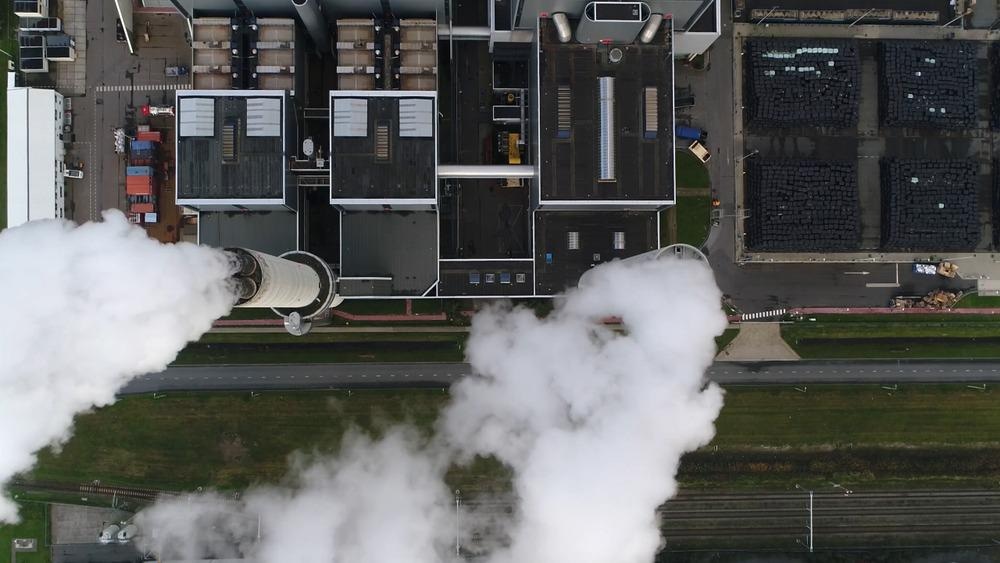Carbon capture and storage (CCS), also sometimes referred to as carbon capture, utilization, and storage is a process that involves capturing man-made carbon dioxide at its source and storing it permanently underground. The CCS process consists of three main steps: (1) capturing and separating CO2 from other gaseous products of combustion, (2) compressing and transporting the captured CO2 to the sequestration location, and (3) inserting the carbon dioxide into subsurface geological reservoirs.

Image Credit: GLF Media/Shutterstock.com
CCS is an important technology as it could significantly reduce the amount of CO2 emitted to the atmosphere from the burning of fossil fuels for electricity production at power plants and other large industries.
The most challenging step in the CCS process is the carbon capture as the equipment required to achieve this is not only capital-intensive to build but also requires a lot of energy to operate. This, therefore, makes CCS both technologically challenging and costly. Consequently, although power plants can supply their own energy they would usually avoid the parasitic load as it can be as high as 20-25% of the power plant capacity.
The Increasing Demand for Carbon Capture
According to the global CCS institute, there are currently 24 facilities worldwide that are capturing CO2. Of these, 12 can be found in the US. The US, with annual carbon emissions of over 5 billion metric tons of carbon dioxide remains one of the top emitters globally as its energy demand is highly focused on fossil fuels.
However, the 2018 release of the UN Intergovernmental Panel on Climate Change (IPCC) report on global warming calls for a possible reduction of emission to net-zero by mid-century. This has bolstered the need for climate action, promoting the development of more projects.
The majority of these operate in five industry sectors, i.e.: chemical production, hydrogen production, fertilizer production, natural gas processing, and power generation. However, in 2020, the Petra Nova project in Texas, which was the only fossil fuel power plant generating electricity and capturing CO2 in significant quantities, had its CCS operations suspended.
The Capacity For America To Capture Carbon
The still-active facilities capture and inject CO2 that is in a supercritical state into a porous rock formation below ground that holds or previously held fluids. These include (1) depleted oil and gas reservoirs, (2) deep saline reservoirs, and (3) non-mineable coal seams. The injected CO2 is prevented from migrating out of the geological formations by the immense pressure exerted on it at depths of more than 800 m.
The storage capacity for CO2 in geological formations is potentially very large if all the sedimentary basins in the world are considered. For instance, the US alone has an estimated storage capacity ranging from 2.6 to 22 trillion tons.
The pumping of CO2 into oil and gas reserves has been practiced for decades as a way to improve production. The United States being a world leader in this technology injects approximately 62 million tons of CO2 underground every year to help recover oil and gas resources.
Unfortunately, most of the CO2 used in this process comes from naturally occurring geological formations and not from industrial sources. Further advancements have however raised the appeal because the costs of using CCS and transportation of the CO2 from the facility could be partially offset by revenues from oil and gas production.
Recent studies have also shown that oil produced using industrial CO2 has a lower lifecycle greenhouse gas emissions intensity than that produced without EOR. Carbon dioxide can also be injected into depleted oil and gas reserves for long-term sequestration without offsetting the financial benefits from oil and gas production.
Conclusion
The United States has 60% of electricity being produced by fossil-powered plants such as the use of methane and coal. It, therefore, provides an ideal condition to commercialize the use of CCS technologies which can be used to help reduce carbon emissions.
Recent movements concerning policy development can provide a promising picture in carbon capture and storage, particularly with the implementation of the 45Q policy and many initiatives to help address the infrastructure shortcomings, the access to affordable and private capital as well as storage characterization.
Support for CCS policies can be increased by including CSS in the regional carbon markets. The transition from renewable to clean energy can help support CSS policies. Creative incentives are needed to help reduce emissions in the industrial sector as a business model that can be used for carbon dioxide storage and transport.
By accelerating the deployment of CCS technologies, the US can accelerate the cost reduction process, which is similar to what Germany has done for solar and the UK has done for offshore wind. This would reduce the collective action problem as a result of climate change as well as help bring the world much closer to tackling its carbon dioxide emissions.
References and Further Reading
Global CCS Institute, 2021. The Global Status of CCS: 2021. Australia, https://www.globalccsinstitute.com/
Beck, L., 2020. Carbon capture and storage in the USA: the role of US innovation leadership in climate-technology commercialization. Clean Energy. https://doi.org/10.1093/ce/zkz031
Folger, P.F., 2017. Carbon capture and sequestration (CCS) in the United States. https://sgp.fas.org/crs/misc/R44902.pdf
Disclaimer: The views expressed here are those of the author expressed in their private capacity and do not necessarily represent the views of AZoM.com Limited T/A AZoNetwork the owner and operator of this website. This disclaimer forms part of the Terms and conditions of use of this website.